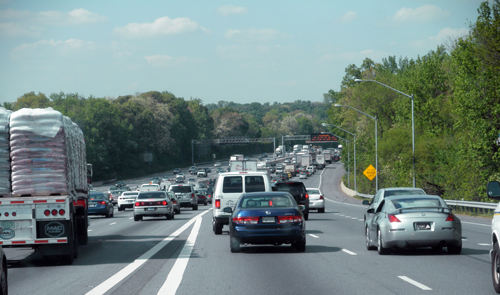 Traditionally, fisheries management has been based on managing harvest. However, the interactions of predation, competition, environmental regime shifts, and habitat alterations can lead to problems even if overharvesting has been controlled. Presuming that ceasing exploitation of an overfished stock will result in recovery ignores the uncertainty imposed by ecological systems. In theory it is possible to prevent or replace unpopular restrictions on harvest with increased production by managing critical habitats or ecological functions as well as the fishery itself. This is called Ecosystem Based Fisheries Management (EBFM).
Traditionally, fisheries management has been based on managing harvest. However, the interactions of predation, competition, environmental regime shifts, and habitat alterations can lead to problems even if overharvesting has been controlled. Presuming that ceasing exploitation of an overfished stock will result in recovery ignores the uncertainty imposed by ecological systems. In theory it is possible to prevent or replace unpopular restrictions on harvest with increased production by managing critical habitats or ecological functions as well as the fishery itself. This is called Ecosystem Based Fisheries Management (EBFM).

With proximity to the nation's capital, and surrounding metropolitan areas and desirability as a playground, Maryland's portion of the Chesapeake Bay watershed is rapidly developing. Fisheries researchers and managers are becoming more aware of the effects of growth on the living resources of the Bay and the small rivers and streams that flow into the Bay.
The Fisheries Ecosystem Assessment Division (FEAD) is working to understand how habitat changes impact Maryland's fisheries in Chesapeake Bay. Our focus has primarily been on understanding how urbanization limits habitat for fish and their fisheries.
Studies by FEAD have found strong links between increased development and declining fish habitat quality in tidal tributaries of the Chesapeake Bay. These links have led to the creation of thresholds and targets for development to consider when managing fisheries and planning for development. These thresholds and targets use impervious cover (hard surfaces such as pavement and rooftops that are impenetrable to runoff of rain and snow melt or structures per standard area) or structures per standard area (hectares or acres) as a measure of development. These development thresholds describe tipping points where habitat becomes poor for fish and shellfish. These targets and thresholds are communicated to planners and the public through a simple message, “Land conservation is fish conservation!" as a reminder that forests, wetlands, other natural areas, and working farms are keys to productive Chesapeake Bay fisheries. These studies indicate that when development (rooftops, roads, sidewalks, parking lots and compacted soils) breaches a threshold in a watershed indicative of a suburban watershed, fish habitat is significantly impaired, and fish populations decline.

Planners should recognize degradation of fish habitat with development as they deal with infrastructure issues, and they should be aware that watersheds with 10% or greater impervious cover or 0.34 structures per acre have poor fish habitat. From the fisheries management perspective, our studies indicate that standard management options (stocking and harvest restrictions) cannot overcome degraded habitat once the threshold is exceeded, and increasingly intractable habitat issues will become common. We recommend a 5% impervious (0.13 structures per acre) level of development (a rural watershed) for productive fisheries.
References:
King, R.S., J.R. Beaman, D.F. Whigham, A.H. Hines, M.E. Baker, and D.E. Weller. 2004. Watershed land use is strongly linked to PCBs in white perch in Chesapeake Bay subestuaries. Environ. Sci. Technol. 38:6546-6552.